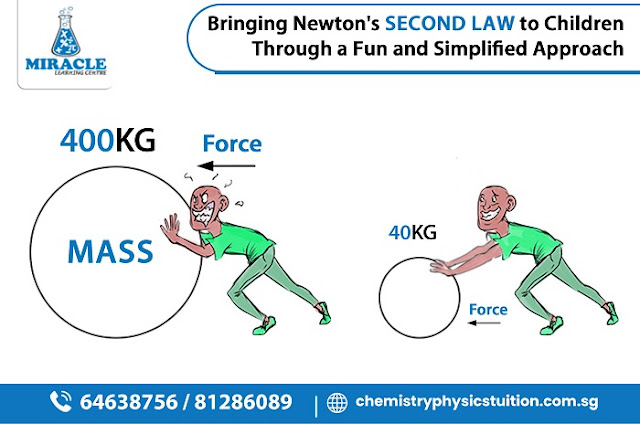Green Chemistry Breakthroughs Are Impacting Learning Habits In Singapore.
The future of chemistry is unfolding right now, and it is greener than ever. In Singapore, sustainability is not an abstract idea but part of the classroom. The Ministry of Education (MOE) integrates green chemistry principles directly into the pre-university curriculum through case-based learning. A 2025 study involving 18 chemistry teachers from 17 schools showed that experiential lessons enriched with sustainability concepts improved both teaching quality and student engagement.
This reflects the Singapore Science Curriculum Framework, which emphasises Science for Life and Society. The framework calls for scientific literacy that combines knowledge, ethical responsibility, and sustainable practices. For JC and secondary students, this means chemistry is no longer just about formulas but also about reimagining how science can solve global challenges without harming the environment.
What Green Chemistry Means in Simple Words
Chemistry can be thought of as a toolbox. Traditional approaches often created solutions but left behind waste and pollution. Green chemistry represents an upgraded toolbox. It focuses on processes that save energy, reduce harmful by-products, and align with sustainability goals.
The central classroom shift is no longer, “Can this reaction happen?”, but “How can this reaction happen in a safer and smarter way?”
This mindset helps students see chemistry as a subject that trains them to protect the environment while solving practical problems.
Breakthroughs of 2025 That Link to the Curriculum
By late 2025, several discoveries are reshaping industries and also making their way into school discussions:
Next-Gen Biodegradable Plastics: Polymers that decompose faster and connect directly to JC chapters on macromolecules.
Carbon Capture Materials: Frameworks that trap carbon dioxide, reinforcing gas laws and equilibrium topics.
Eco-Friendly Catalysts: Safer catalysts designed from iron and other common metals, linked to transition metal chemistry.
Self-Healing Materials: Concrete with built-in repair capabilities, illustrating chemical bonding and reaction design.
These examples are no longer just headlines. They are potential case studies that students may encounter in classroom discussions and even in future MOE exam questions.
Why Students Should Pay More Attention Now
Green chemistry principles are already part of how science is taught. Singapore teachers use case-based learning to make abstract concepts more relevant. For students, this means:
A chapter on polymers becomes connected to biodegradable plastics.
Equilibrium and gas laws explain the science behind carbon capture.
Transition metals lead naturally into discussions on sustainable catalysts.
When these links are made clear, Chemistry comes to life and becomes purposeful. Revision becomes easier because students see the significance of the theories in a world that focuses on sustainability.
How Green Chemistry Changes Regular Lifestyle?
The Singapore Science Curriculum emphasises Science for Life and Society for a reason. Chemistry is everywhere, from the shampoo you use to the packaging that keeps your lunch fresh and the battery that powers your phone.
Green chemistry helps students recognise how these everyday items can be redesigned with sustainability in mind. This shift is not only global but also local, as schools in Singapore adapt labs and teaching modules to reflect greener practices. International Green Chemistry Education Awards are influencing curriculum design worldwide, and their approaches are beginning to shape classroom learning in Singapore as well.
Some Stories That Bring Chemistry to Life
Science becomes memorable when students can connect lessons to stories and examples:
Food waste into packaging: Banana peels transformed into biodegradable films
Sodium-based batteries: Safer and greener alternatives to lithium storage systems
Water purification: Advanced chemistry delivering cleaner water at lower cost
Self-healing concrete: Materials that repair cracks and extend building lifespans
Carbon capture filters: Designed frameworks trap and store carbon dioxide effectively
Biodegradable medical sutures: Stitches that dissolve safely inside the human body
Solar-powered paints: Coatings that turn walls into energy-producing surfaces
Eco-friendly fertilisers: Nutrient-rich solutions reducing environmental run-offs
Plastic-eating enzymes: Proteins engineered to break down single-use plastics quickly
Edible food coatings: Thin films replacing plastic wraps and keeping produce fresh
Each case is a reminder that what students learn in classrooms is part of larger global challenges.
Tackling The Challenges Of A Packed Curriculum
The JC and secondary syllabus is more demanding than ever. Keeping up with both content and new discoveries can feel overwhelming. Students are expected to master traditional topics while also engaging with sustainability themes that may appear in exams.
Guided support makes this balance possible. At renowned professional centres, like the Miracle Learning Centre, lessons connect syllabus requirements with current developments, making complex concepts manageable.
With Chemistry Physics tuition, students gain:
Clear explanations that simplify complex theories and align with life activities
Links between classroom chapters and real-world sustainability breakthroughs
Confidence to face exam questions that may introduce unfamiliar scenarios
Where Exactly Guided Support Comes In
Green chemistry is not just a laboratory innovation. It is part of the way science is being taught in Singapore. From biodegradable plastics to carbon capture and eco-friendly catalysts, discoveries in 2025 are directly connected to what JC and secondary students are learning.
At Miracle Learning Centre, the goal is to make this connection clear. With structured Chemistry and Physics tuition, students gain the knowledge, confidence, and curiosity to excel in exams while also understanding how their learning contributes to a sustainable future.
The Road Ahead For Science Learners
As sustainability becomes a life moto, students of science can learn to develop skills that help-
Answer exam questions tied to environmental and ethical considerations
Connect Chemistry, Physics, and Biology topics better and fill knowledge gaps
Improve emphasis on applications instead of rote theory, making science easier
As this trend becomes a recurrent theme, students who adapt quickly, stay curious, and make real-world connections will find themselves prepared for both exams and the future challenges of science and society.




Comments
Post a Comment